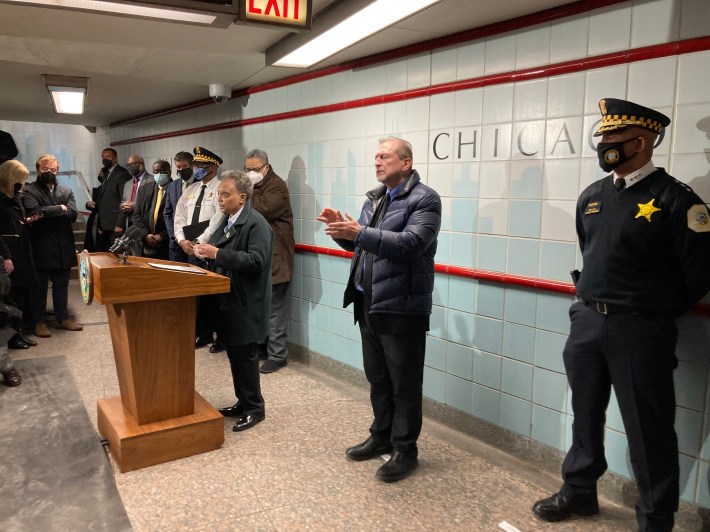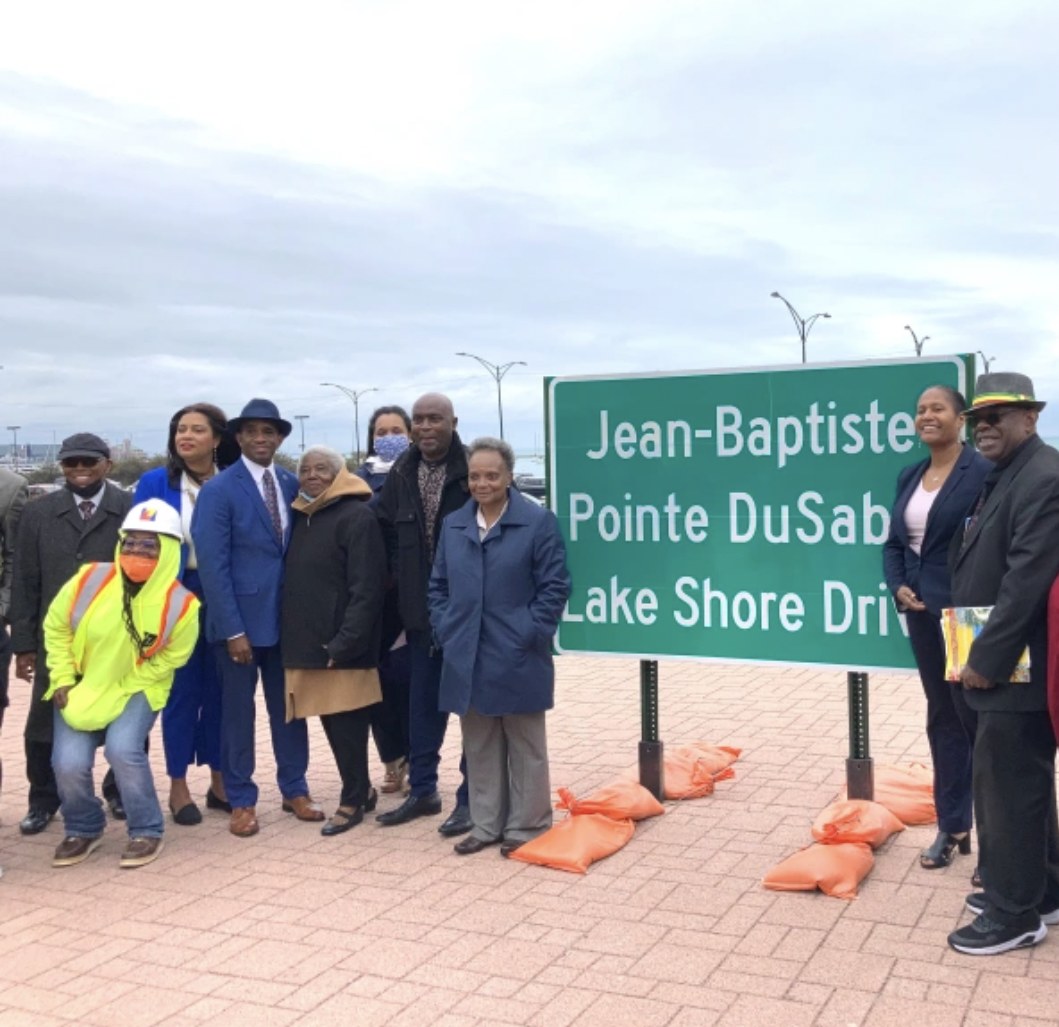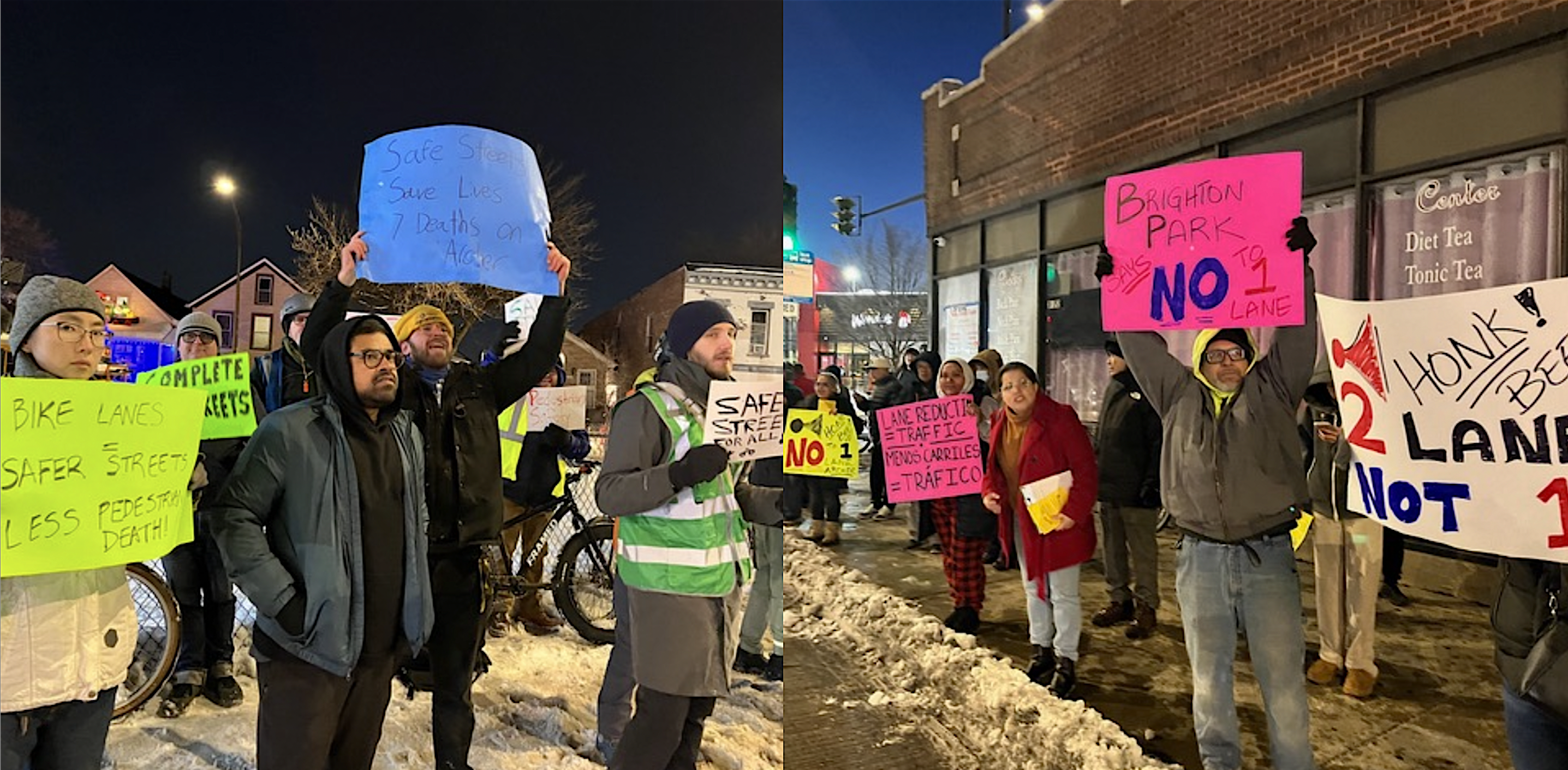The dust has settled from yesterday's Chicago general municipal election, which of course means it's time to gear up for the April 4 runoffs. The two mayoral hopefuls heading to the finals are Brandon Johnson, who has spoken fairly extensively about his ideas to improve walk/bike/transit and traffic safety, and Paul Vallas, not so much.
Sustainable transportation-friendly alderperson candidates generally did well. And three of the most bike-friendly alders, Daniel La Spata (1st), Matt Martin (47th), and Andre Vasquez (50th) either ran unopposed or garnered at least 25 percent more of the vote than their closest rivals. (La Spata will likely face a runoff since it doesn't look like he will win the necessary 50 percent of the vote to avoid one.) That suggests that livable streets is good politics.
Of course, the most obvious loser in the election was Mayor Lori Lightfoot, who came in third, which means she'll be stepping down in May. That makes her the first single-term mayor since Jane Byrne, Chicago's only other female chief executive, lost reelection in 1983.
Lightfoot will leave behind a mixed legacy. In her defense, she blazed a trail as our city's first Black, female, and openly LGBTQ mayor. She was dealt an exceptionally difficult hand, including both the COVID-19 crisis and the civil unrest associated with the George Floyd protests, and she provided fairly steady leadership during the pandemic. (I'll discuss exceptions to that below.) She also oversaw the increase of Chicago's minimum wage to $15.
Lightfoot chipped away at aldermanic privilege, the ability of City Council members to veto projects in their wards. While somewhat controversial, her Invest South/West program has probably helped underserved neighborhoods overall. She secured the Bally's Casino deal, which will likely do more good than harm for the city. And she even abolished library late fees.
On the other hand, critics point to her heavy-handed response to the Floyd demonstrations (more on that below), and the fact she spent 60 percent of the city's federal COVID funds on policing. She frequently sparred with the Chicago Teacher's Union, resulting in a strike, and almost precipitating a second one, and she reneged on her campaign promise to support an elected school board.
But Lightfoot's downfall was most likely caused by her combative personality. This was neatly summed up by her former ally Ald. Susan Sadlowski-Garza: "I have never met anybody who has managed to p--- off every single person they come in contact with. Police, fire, teachers, aldermen, businesses, manufacturing."
Of course, this is a sustainable transportation and traffic safety news website, so we're most interested in what she accomplished, or didn't do, in these areas. Here's a quick summary.

The worst things about the Lightfoot administration from a livable streets perspective
- Deteriorating reliability, safety, and cleanliness on the CTA during the COVID era
- Refusing to collaborate with ex-rival Cook County president Toni Preckwinkle on Fair Transit South Cook pilot
- Spending $101 million on questionable security measure for the 'L' like poorly-prepared guards and dog units
- Overseeing a historic spike in traffic fatalities, particularly pedestrian and bike deaths
- Shutting down Loop CTA and Divvy access and raising downtown bridges during the Floyd protests
- Closing trails, parks, and beaches during the pandemic, while simultaneously allowing beachfront bars to reopen
- Unlike other cities, failing to use decreased driving during COVID as a chance to expand bus/bikeway network
- Suspending the Mayor's Bike and Pedestrian Advisory Councils during COVID
- Failing to create a cohesive network of connected, protected bikeways
- Spending $7.5 million in taxpayer money on a gas card giveaway as a reelection ploy, and calling Chicago "a car city"
- Going out of her way to bring a NASCAR race to Chicago that will take over Grant Park, the city's front yard
- Allowing her security guards to park in a bike lane while she bought doughnuts.
The best things about the Lightfoot administration from a livable streets perspective
- Creating the Chicago Works infrastructure plan, which currently earmarks $238 million for walk/bike/transit
- Passing the tax-increment financing districts to fund the south Red Line extension
- Passing an equitable transit-oriented development ordinance
- Defeating the ordinance to essentially condone 9 mph speeding near schools and parks
- Creating the Clear Path program, allowing low-income residents to pay only half of traffic fines, plus debt forgiveness
- Installing pedestrian safety infrastructure at hundreds of locations across the city
- Putting in 100 miles of bike lanes with a focus on the South and West sides
- Committing to upgrading all existing protected bike lanes with concrete curbs
- Expanding the Divvy bike share system to cover most of the city
- Rolling out a well-designed dockless scooter program
- Earmarking $6 million for the Englewood Line bike and pedestrian trail
- Committing to give away 5,000 free bicycles
And, this isn't a sustainable transportation matter, but I did think she came up with a clever compromise for renaming our city's coastal highway after the city's Black founder without dropping LSD: Jean Baptiste Pointe du Sable Lake Shore Drive, or DuSable Lake Shore Drive for short. Of course, a truly visionary mayor would have pushed to convert the eight-lane monstrosity to a human-scale, multi-modal surface boulevard.
Am I overlooking any of the worst or best aspects of Lightfoot's reign from a livable streets POV? Let us know in the comments.

Did you appreciate this article? Please consider making a tax-deductible donation to help fund Streetsblog Chicago's next year of publication. Thanks!







